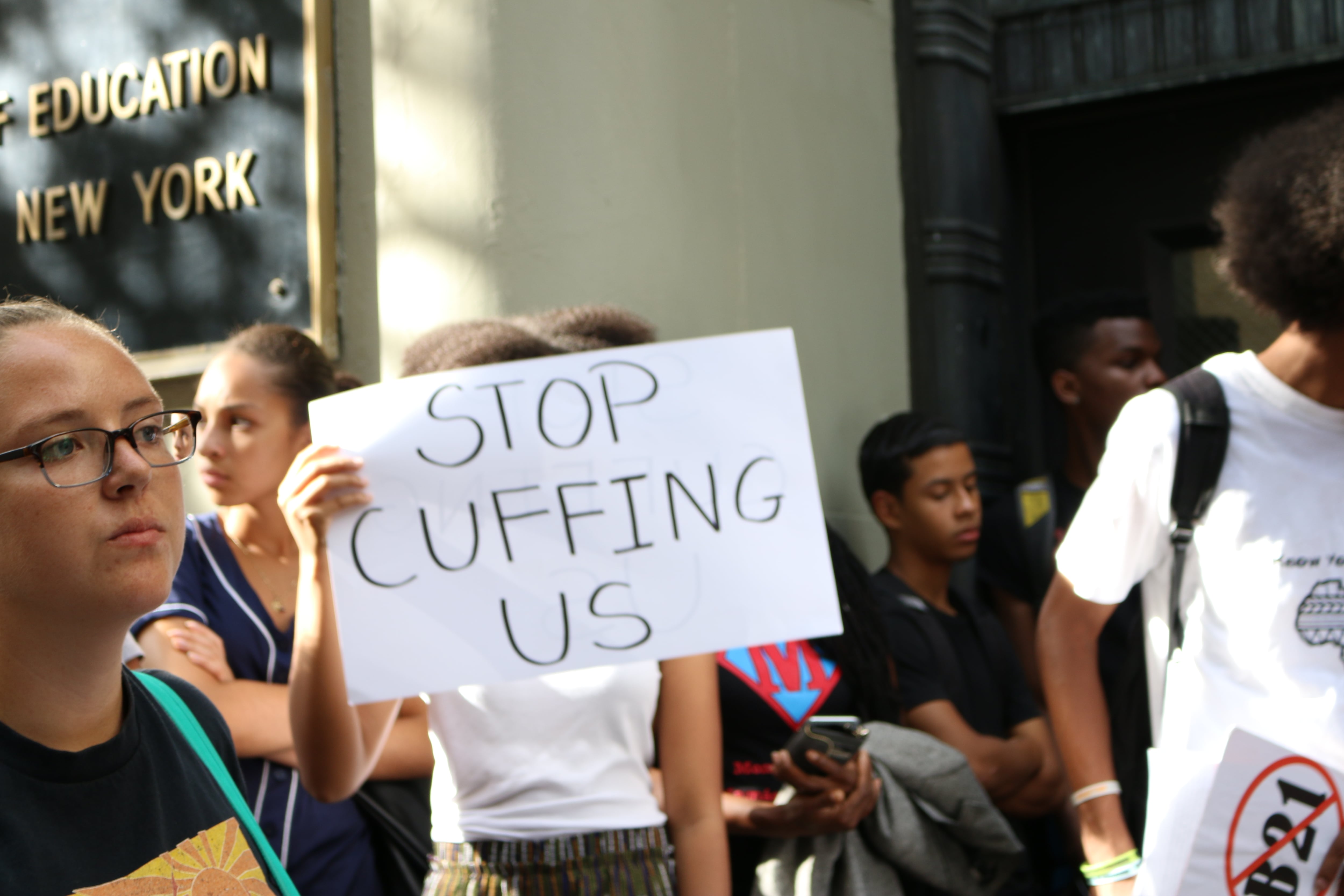Suspensions fell sharply last school year, largely because few schools handed them out when campuses were shuttered due to the coronavirus.
In total, suspensions dropped to 18,215 during the 2019-20 school year, down about 45% from 32,801 the previous school year, according to annual data the education department released Tuesday.
Suspensions from New York City public schools have fallen significantly in recent years, though Black students remain far more likely than their peers to be disciplined. Education department officials have attributed the overall decline in suspensions to discipline reforms, as well as an emphasis on restorative justice practices, which emphasize repairing harm instead of issuing punishment, and social-emotional learning.
The newly released data, however, represents a markedly steeper drop, which some discipline reform advocates say is good news. But they also cautioned against drawing conclusions based on year-over-year comparisons, given the unprecedented circumstances last school year.
During remote learning in the spring, schools handed out just six principal suspensions, which are less severe and can last for up to six days. During that period, there were no superintendent suspensions, which are more serious and can range from a few days to an entire school year. (New York City public schools averaged 3,644 suspensions a month during the 2018-2019 academic year.)
Even before campus closures, suspensions were trending downward, said Nathaniel Styer, a spokesperson for the education department. By March 16, the last day of in-person learning last school year, the total number of suspensions had dropped by nearly 13% compared to that same point a year earlier, Styer said. Before remote schooling started, suspensions longer than 21 days accounted for fewer than 1% of all suspensions, compared to 4% the previous year — likely a direct result of the city capping most suspensions by 20 days.
Yet disparities persist. Black students received 43% of all suspensions, even though they make up about a quarter of all students. Students with disabilities accounted for about 40% of suspensions, even though they make about 20% of the city’s student population.
Hispanic students make up just over 40% of the student population and received that percentage of suspensions, a slight uptick from the previous year.
White students, who make up 15% of New York City’s public school enrollment, were handed 9% of suspensions, and Asian students, who make up 16% of the student population, accounted for 5.5% of all suspensions. Advocates noted some other concerning statistics: Black students received nearly half of all suspensions or removals from school that also involved contact with the police, and six police-involved incidents involved 6-year-old children.
Styer acknowledged that officials “still have work to do” in combating racial disparities, which are problems at local and national levels, but pointed to the city’s efforts to provide implicit bias training, social-emotional learning and trauma-informed instruction.
Superintendent suspension lengths were similar across racial groups, averaging 11.1 days for white students, 11.4 days for Asian students, 11.5 days for Hispanic students, and 11.8 days for Black students.
“COVID-19 has put a spotlight on the role schools play for young people grappling with loss, grief, and trauma, and the investments we’ve made over the years have laid the groundwork for our students to feel safe and supported, whether in person or remotely,” Chancellor Richard Carranza said in a statement. “We will continue to lead with education, empathy, and repairing harm as we drive down suspensions and keep our school communities safe.”
Throughout his tenure, Mayor Bill de Blasio has overseen multiple changes to the discipline code, including limiting suspensions for the city’s youngest children and capping most suspensions to 20 days.
This summer, following the local and national outcry over police violence against Black people, de Blasio agreed to shift the supervision of school safety agents from the NYPD over to the education department over the next two years, but his move was criticized for not going far enough.
Meanwhile, some educators and union officials have criticized discipline reforms, saying that staff didn’t have enough support to implement changes, leading more students to believe there are little consequences for misbehavior. More recently, school leaders said the department provided little clarity on how to handle student misbehavior as they prepared to welcome some students back for in-person schooling, with most classes remaining online.
Some advocates who have pushed for discipline reform were encouraged by Tuesday’s suspension data, pointing to the very efforts they pushed for that the city has undertaken. But they said there is work ahead to improve the numbers and erase disparities.
Nelson Mar, an attorney with Bronx Legal Services, said the numbers were generally headed in a “good direction,” but it was hard to make too many conclusions because of school closures.
“One of the things that we would hope that the city does with the data is to really look at the schools that have the higher rates and the higher incidents,” and direct resources to those schools, Mar said.
Dawn Yuster, director of the School Justice Project at Advocates for Children New York, said the reduction in suspension length is “particularly notable” and is reflective of the education department’s revamp of the discipline code. She hoped the city’s plan to expand mental health supports in school communities hardest hit by the pandemic will lead to fewer disciplinary actions this school year.
Still, Yuster was concerned that the average length for a superintendent suspension hovered just above 11 days.
“I think there is still a lot of work to be done to reduce the amount of time that students are spending outside of school and not learning and losing days of instruction,” Yuster said.





